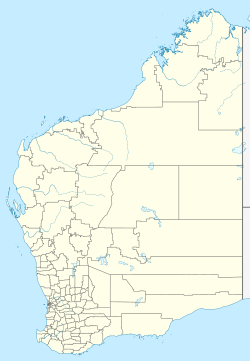 | |
| Location | |
|---|---|
| Location | Shire of Ashburton, Pilbara |
| State | Western Australia |
| Country | Australia |
| Coordinates | 21°45′00″S116°14′32″E / 21.750059°S 116.242203°E |
| Production | |
| Products | Iron ore |
| Production | 7 million tonnes/annum |
| History | |
| Opened | 1994 |
| Owner | |
| Company | Rio Tinto Iron Ore (53%) Mitsui & Co (33%) Nippon Steel (10.5%) Sumitomo Metal Industries (3.5%) |
| Year of acquisition | Rio Tinto: 2000 |
The Mesa J mine is an iron ore mine located in the Pilbara region of Western Australia, 16 kilometres south-west of Pannawonica. [1]
Contents
The mine is owned by Robe River Iron Associates (53% Rio Tinto) and operated by Rio Tinto Iron Ore and is one of twelve iron ore mines the company operates in the Pilbara. [2] [3] In 2009, the combined Pilbara operations produced 202 million tonnes of iron ore, a 15 percent increase from 2008. [4] The Pilbara operations accounted for almost 13 percent of the world's 2009 iron ore production of 1.59 billion tonnes. [5] [6]
The Hamersley Range, where the mine is located, contains 80 percent of all identified iron ore reserves in Australia and is one of the world's major iron ore provinces. [7]

